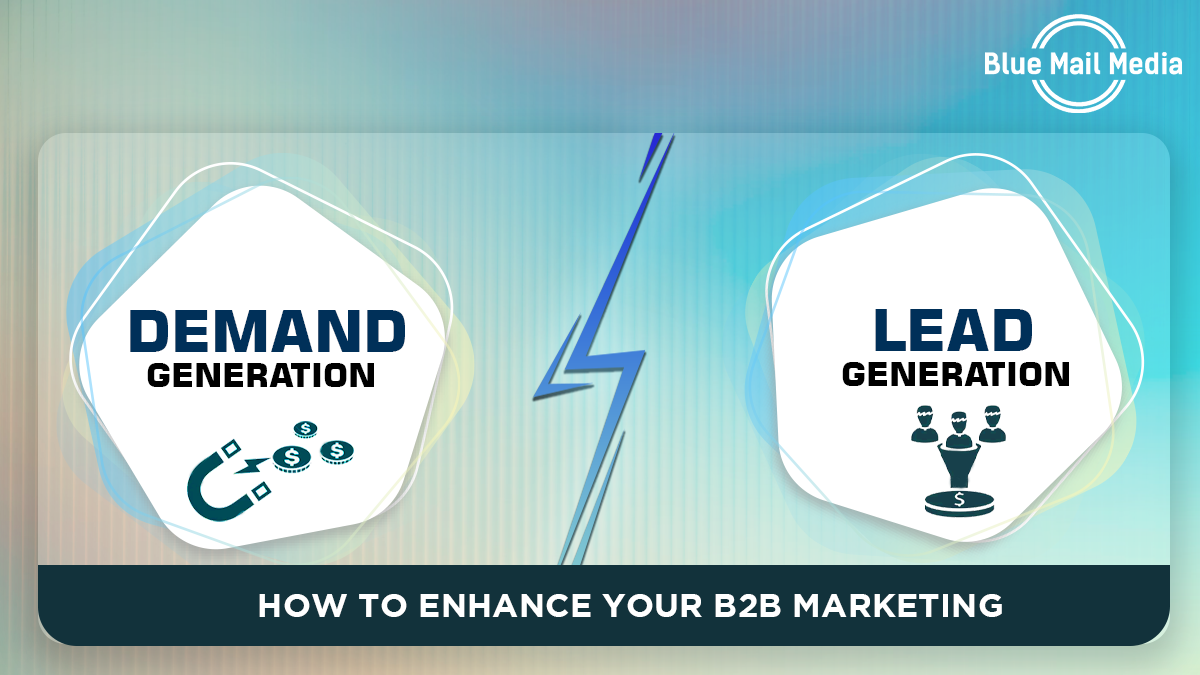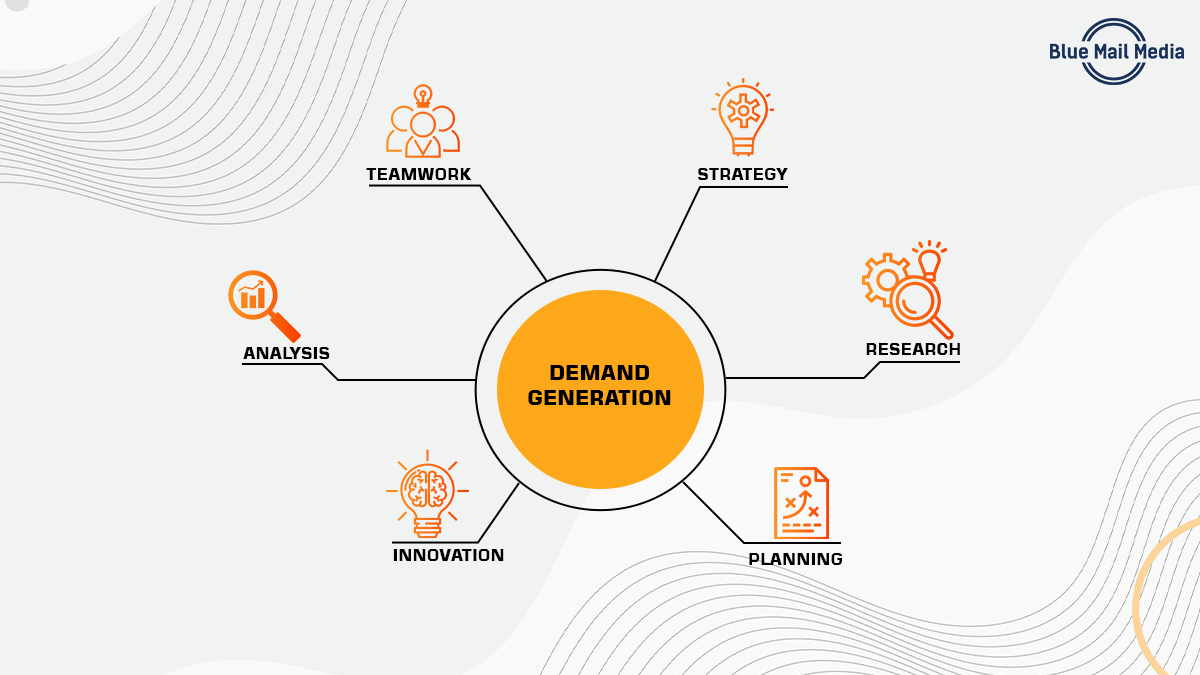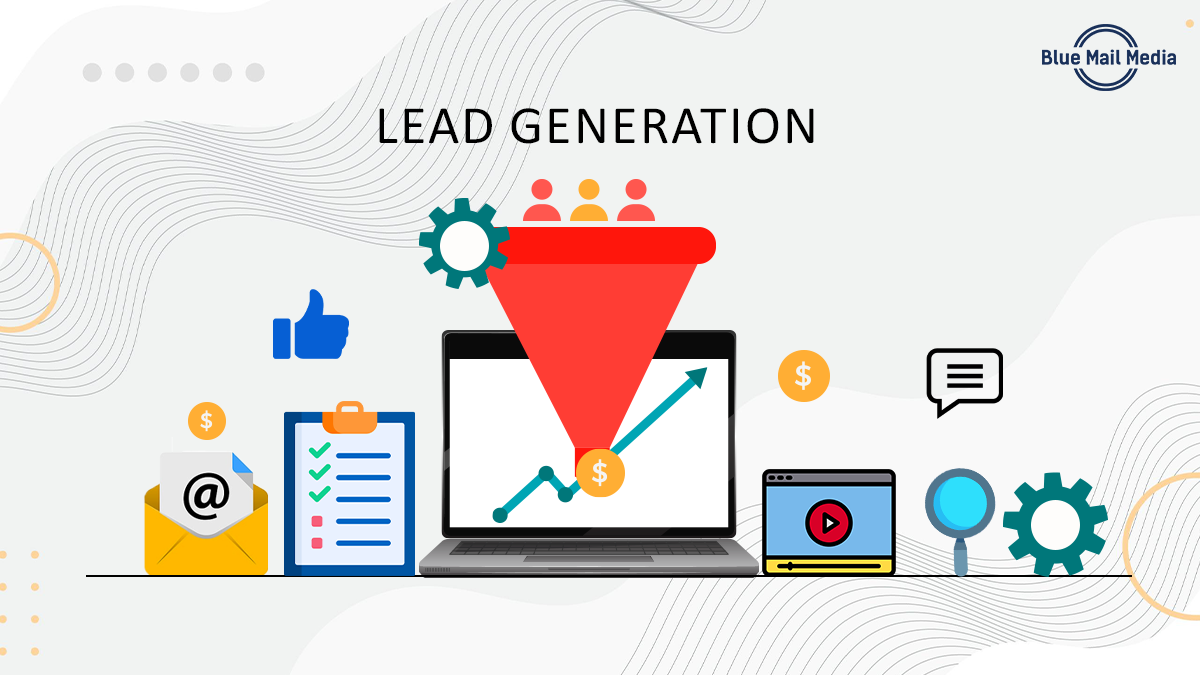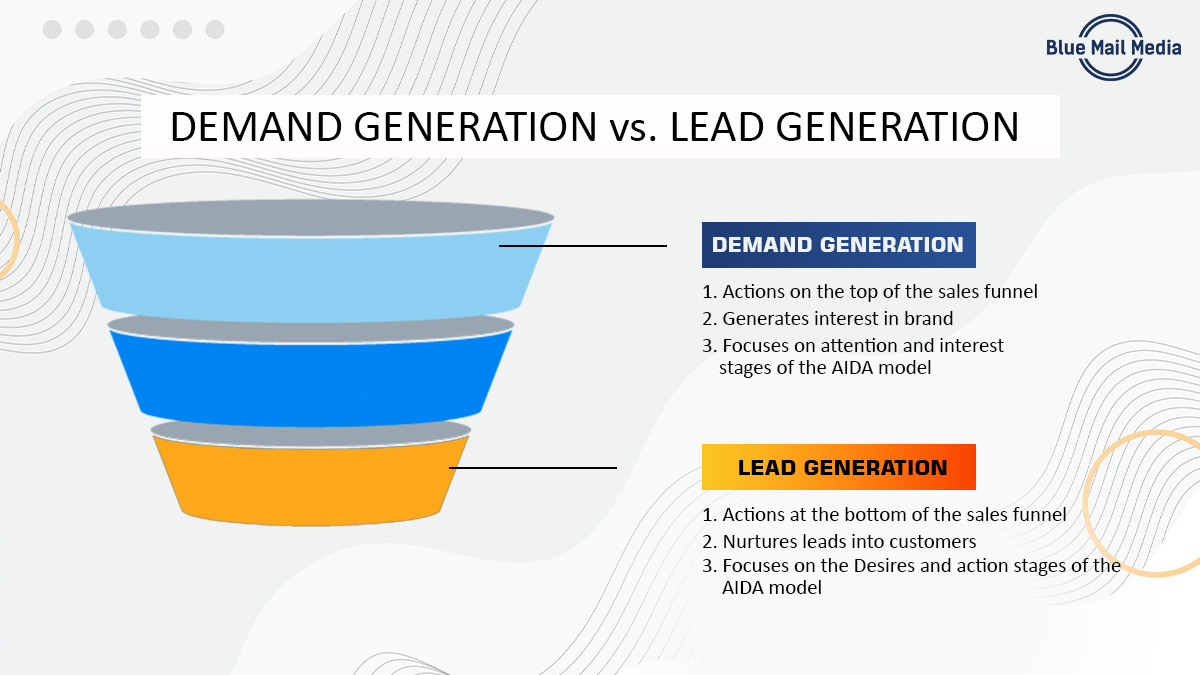Demand generation and lead generation go hand in hand. Many people think of them as contradicting each other, but in reality, demand generation and lead generation are equally essential for a proper sales funnel to function. Demand gen and lead gen are both marketing strategies that focus on attracting potential prospects interest and turning them into loyal clients. Demand generation raises brand awareness, while lead generation converts the audience already aware of the brand into prospects. Further below, we will read about demand gen and lead gen in detail and how they help the sales funnel to function smoothly.
What is Demand Generation
Demand generation is the marketing activity that creates demand and awareness about the brand. It helps your company expand into new areas and excite prospects about what you have to offer. It includes content, advertising, podcasts, webinars, etc. Blogging and producing materials for your audience to help them succeed are two systematic ways to employ demand creation to draw in audience interest.
Key Components of Demand Generation Strategy
The primary objective of demand generation is to increase interest in and awareness of your offering. It encompasses every encounter a potential prospect has with your company, including how they initially learn about you, grow to like your brand, learn about your product or services, and finally enter your sales process as qualified leads. There are some key components of demand strategy that you must know:
- Know your Target Audience: You must know and understand which audience type suits your business and target them accordingly. You must compile your target audience based on the kind of product you are catering to. Knowing your target audience helps you customize your content strategy based on what matters to your audience.
- Understand Your Business: Knowing your business thoroughly is crucial while preparing a demand generation strategy. A proper in-depth understanding of your business is essential as only then you can provide your audience with the best services. Focus on the audience’s pain points and target them by offering solutions. This will help to create demand and raise awareness about the brand.
- Content Planning: Planning content is essential for demand generation because it helps you to reach out to your target audience effectively. Your content must be simple, catchy, and informative so that audience can relate to it and come to your page. For an effective approach, you should plan, compile, and present your content effectively.
- Inbound Marketing: A technique for creating demand that involves drawing website visitors, holding their attention, and converting them into leads is known as inbound marketing. The link between lead generation and demand creation is to employ a seamless client satisfaction journey. This can be done by leveraging a combination of an inbound marketing strategy, an optimized website, and a client-centric mindset. High-quality content needs to be created, optimized, and promoted by marketers through paid advertising, marketing automation, and emails.
- Follow-up your Leads: After content planning and generating leads, it’s time to take some action. Regular follow-ups are not only important for potential high quality leads but also help in converting cold leads into prospects. Cold leads can also convert into warm leads so don’t leave them out and take follow-ups from time to time.
- Conversion Optimization: Conversion optimization ensures potential clients can evaluate your product efficiently, find answers to essential purchasing questions, contrast it with rival products, and promote high-intent conversions. This usually starts with your website in B2B scenarios. So, ensure your website is active and contains all the relevant information.
Demand Generation Metrics
KPIs, or key performance indicators, must be included while creating a demand generation strategy in order to keep track of them. The following are some essential metrics to keep an eye on as you try to generate demand for your product among the many marketing metrics that can be used to track demand-creation campaigns.
- Cost per Acquisition: Cost per action, or cost per acquisition or CPA, is a significant demand generating indicator that aids in calculating return on investment. CPA is a monetary metric that illustrates the foundation of your income-generation initiatives.
- Traffic on Website: The fundamental goal of a demand generation funnel is to attract high-value clients for your company. You can employ a variety of strategies to increase website traffic, gathering information from potential prospects as you turn them into leads. For figuring out how much traffic your website is getting, this measurement is essential.
- Client Lifetime Value: Various metrics are important, but client lifetime value is a crucial metric without which you cannot track how much value a client will bring to your business. CLV helps to determine how much profit a client will potentially add to your business during his lifetime.
- Close Rate per Channel: In demand generation, demand is generated through multiple platforms, and therefore, keeping track of all the channels is essential. You must optimize specifically for each channel and appropriately allocate the budget towards the highest-performing channels to optimize your demand generation funnel.
What is Lead Generation
Lead generation refers to gaining the interest of potential prospects interested in getting or knowing about your products and services. It is the process of identifying prospective customers and getting in touch with them in an effort to win their loyalty. In the present scenario there are many methods to generate leads, including social media, blog posts, email marketing, live events, etc.
Key Components of a Lead Generation Strategy
A lead generation campaign can generate quality leads efficiently. You need a lead generation campaign if your business is about more than just raising awareness in order to find the right clients. Running a lead generation campaign tailored to the requirements of your company will help you do this. You must bear in mind a few key factors when managing a lead generation campaign.
- Identify the Target Audience: Before launching a campaign, it’s critical to comprehend every aspect of it, with the target audience at the forefront. It is essential to conduct market research on the target demographic and plan the campaign accordingly. Setting up techniques to draw and convert leads will be simpler if you know who you want to target. Customize audience data based on the target demography, including location, age group, gender, behavior, etc.
- Create a Landing Page: Creating separate landing pages for lead generation is a must but is mainly avoided by companies. Most companies use their website homepage to direct traffic which is not advisable. Using a separate landing page helps convey the message better and helps the traffic convert into leads.
- Provide Relevant Content and Offers: Generating traffic on a landing page is not enough. You must provide relevant and good-quality content to retain the traffic and convert them to leads. Providing offers and discounts are also an effective way to gain potential client’s attention and turn them into potential prospects.
- Call To Action: CTAs or call to action are essential messaging tactics to motivate leads and let them know of what you have to offer. To expect best results, leads need to be generated and given something of value for them to perform the appropriate action. A creative and effective CTA will help grab the audience’s attention and provide you with quality leads.
- Lead Capture Forms: To maintain the lead information, you must have a lead capture form on your landing page. Create lead capture forms that collect essential information from your audience and maintain a separate database for them. This will help you follow the trail on your leads and analyze your target audience.
- Follow-up Communication: After generating the lead, your job is not over yet. To ensure that the lead turns into a clients, you need regular follow-up communication with them. To do so, you must make a follow up strategy that will help smoothen out the process. Not taking follow-up calls can freeze the connection, and you might lose a potential client.
Lead Generation Metrics
Every organization faces a major difficulty when it comes to generating excellent leads, which makes keeping track of the leads crucial. To do this, there are a few indicators that should be observed, which will aid in tracking the campaign as a whole. Marketers may plan and enhance their lead generation strategy using the data. Some of the key metrics for lead generation are mentioned below:
- Lead Quality: The overall value and quality of your leads is a vital KPI for lead generation. In order to choose your lead generation plan more wisely, keeping track of lead quality helps forecast how much revenue you’re pulling in from incoming sales.
- Conversion Rates: Conversion rates help you to know how many leads are getting converted eventually and turning into clients. Low conversion rates are a serious problem for B2B sales. There can be various reasons for a low conversion rate and therefore, it is important to keep a track of conversion rate.
- SQO’s: Sales qualified opportunities or SQOs are important metrics when it comes to measuring leads because they are a reliable predictor of future revenue. Tracking lead KPI can help you generate leads that are of better quality and will turn into loyal client’s increasing conversion rates, shorten the sales cycle, and increase win rates.
- Average Deal Size: This refers to the total revenue a company has generated in a fixed period of time. It is vital to track the leads on a regular basis and how much revenue was generated from it. The formula below is used to determine the average deal size of the company.
Average Deal Size Formula = Sum of Deals in Period/Number of Deals
What is the Difference between Demand Generation and Lead Generation?
Demand and lead generation are distinct in specific ways but equally important for an active sales funnel to work efficiently. The prominent difference between demand and lead gen is that demand generation raises brand recognition while lead generation assists in converting brand-aware audiences into potential clients. The significant difference between demand and lead gen is that every demand gen campaign must be followed by a well-planned lead gen campaign
To simplify things, demand is created when you raise awareness to attract your audience’s attention and pique interest in your goods or services. This happens at the top of the sales funnel. In contrast, lead generation concentrates on gathering data from interested prospects to turn them into customers.
Wrapping Up
These two elements now need to come together for formulating an effective business strategy. They directly impact the business; therefore, by combining them, you can shorten the sales funnel, get better leads and increase conversions.
Demand generation helps increase brand awareness, thus providing a smoother path for lead generation that attracts potential clients and leads to conversion. An amalgamation of the two is crucial for a smooth lead conversion process; the end goal is rapid sales growth through lead conversions.
Strike the right balance between both, and witness your marketing campaign take off!




